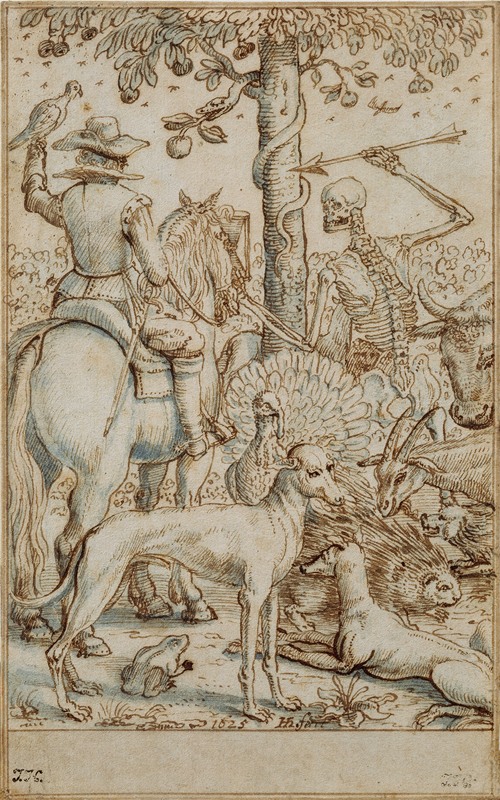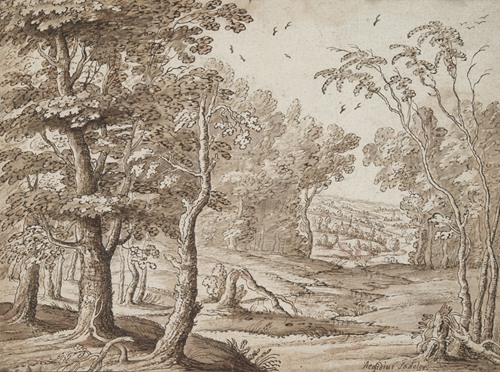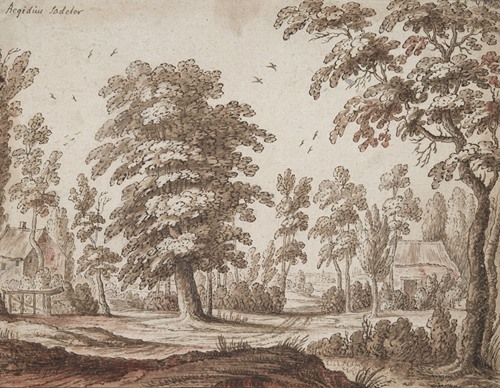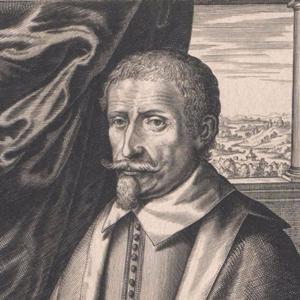




Hendrik Hondius I was a Flemish-born and trained engraver, cartographer, and publisher who settled in the Dutch Republic in 1597.
He was born as the son of Guillam (Willem) de Hondt, a philologist, in Duffel (Duchy of Brabant in Flanders). The 17th century Flemish biographer Cornelis de Bie reports that Hondius' father was a learned man who moved with his family to Mechelen. Here the young Hondius learned to write. After the death of his father he moved with his mother to Antwerp. After his mother's marriage to a citizen of Antwerp, Hondius was apprenticed in Brussels to Godfried van Ghelder, goldsmith to Alexander Farnese, Duke of Parma. He also studied drawing with the engraver Jan Wierix of Antwerp. At this time he started to study engraving. He applied himself to mathematics and studied perspective, architecture and the construction of fortifications with Hans Vredeman de Vries and Samuel Marelois.
After travelling to Cologne, London and Paris, he moved to The Hague by 1597. That year he registered in the local artists’ guild and married the daughter of a goldsmith of The Hague. He obtained his first print privilege for a portrait of Prince Maurits. He dedicated himself to his engraving practice. His work was very well received and he got commissions from many eminent personalities for engravings or drawings.
He was granted a general privilege by the States General of the Netherlands in 1599. Hondius was thus the first publisher to obtain a national privilege until Peter Paul Rubens in 1618. The privilege provided protection against circulation in the Dutch Republic of copies of his published works. He moved to Amsterdam in 1603 and Leiden in 1604–1605. Here he published with the printer Breukel Cornelisz Nieulandt of The Hague the book Perspective by Hans Vredeman de Vries. He returned to settle in The Hague in 1605. After his return to The Hague his prints displayed the Buitenhof as his address. The young Constantijn Huygens followed in 1611 for three months drawing classes with Hondius. Hondius bought in 1614 a large house between the Binnenhof and the Gevangenpoort in The Hague which he used as work and living quarters. He joined in 1617 the local church counsel where he adopted an anti-catholic and anti-arminian standpoint.
He had a flourishing printing business in The Hague, which was continued by his sons Willem and Hendrik. Initially he hired printers to do his printing until he bought his own printing press in 1620. He turned more to publishing rather than engraving and printing in the 1630s. His publications were mainly maps, books about fortifications and official portraits. He also reused original plates and blocks by earlier artists for reprinting and such reprints represented almost a third of his publishing output. In the 1640s he returned to printing concentrating exclusively on etching. He remained active as a printmaker and draughtsman until his final years.


